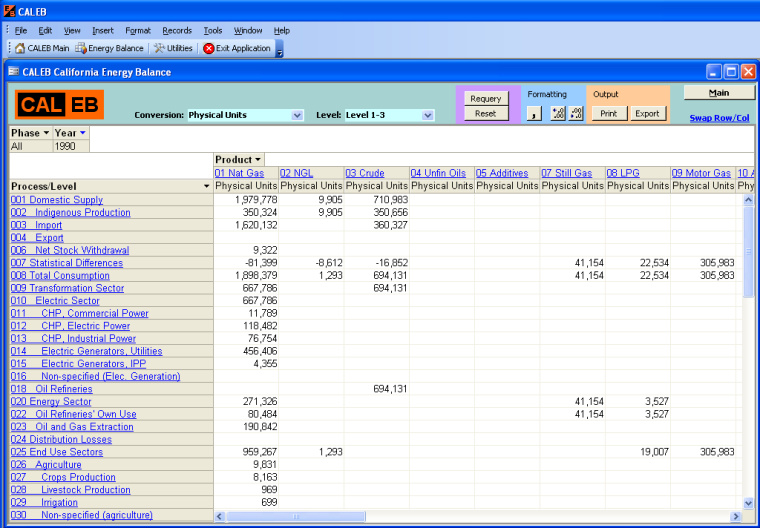The California Energy Balance database enables economists, analysts, policy makers and other non-technical professionals to quickly access and view California energy data from different perspectives. Caleb is a multidimensional database which uses a pivot table as it's primary user interface elememt. The abilty to pivot data using drag and drop makes it easy to manipulate the data according to the perspective required. Any of its four dimensions can appear in column or in row. The display can be filtered by any of the display elements.
Caleb data is organized around four primary dimensions: Products, Flow, Time and Units. Data has been collected in physical unit (PU) only; after importing from Excel, the data is then converted to the different energy units according to various rules. Energy flows are adjusted using an array of rules which are applied according to the material, process, and unit. In total, the database contains 6 units (PU, BTU, TJ, TOE, CO2 and Carbon), 40 products (ie materials), and 231 flows (aka processes). At this time, CALEB contains data for 19 years (from 1990 to 2008).
Caleb was created as part of a collaboration between Lawrence Berkeley National Laboratory (LBNL) and the California Energy Commission (CEC)
